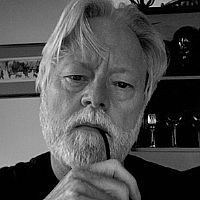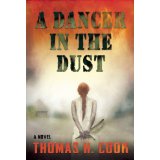That remark by native Lubandan and the only white native of the country Martine Aubert could define the entire narrative spine of Thomas H. Cook’s Dancer In The Dust. Ray Campbell came to Lubanda as a young man intent on doing good and changing peoples’ lives. He left, defeated in his original purpose by politics and revolution, but in love with this lady who inherited a farm from her family and is intent on leading a simple, uncorrupted life.
A murder in NYC of a man whom he knew all those years back and who worked for his love, Martine, takes him back. The investigation of the murder takes him back to the country to see what he can solve. He finds himself involved with many of the people he knew before. The convoluted circumstances of both the personal and the political intrigues become byzantine in the extreme.

As Campbell’s interviews proceed, we find ourselves involved not only in the personal and criminal drama he came to deal with, but with principles of international relations. When is foreign aid helpful, when corrupting and destructive to the very people and countries it was intended to support?
There are answers to these questions in the novel, but no solutions. And in the end, it seems to me we are left with the romantic and ephemeral image of the title. It may not seem like much, but believe me, it’s emotional impact is considerable. Dancer in the Dust doesn’t leave your mind or your heart.

